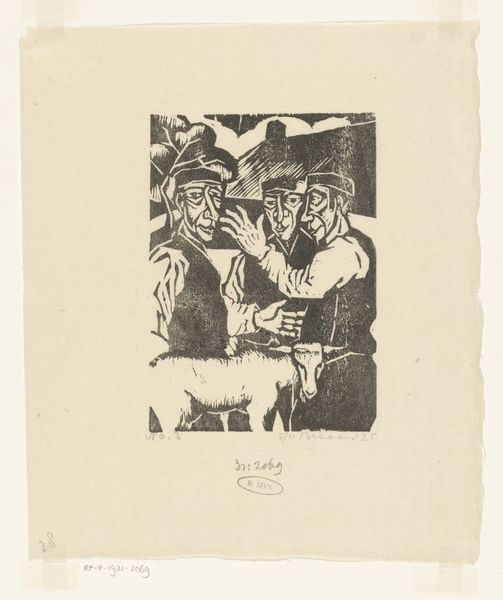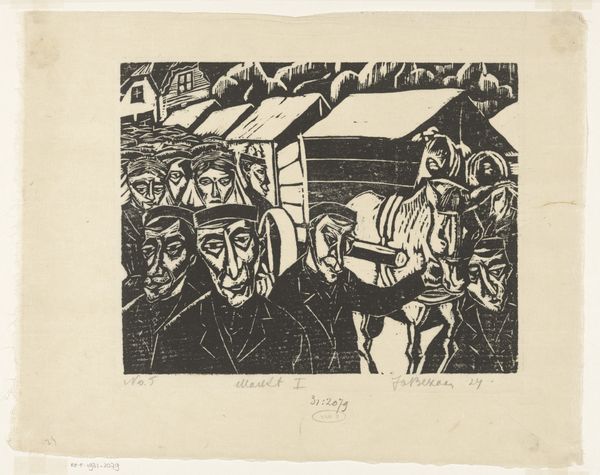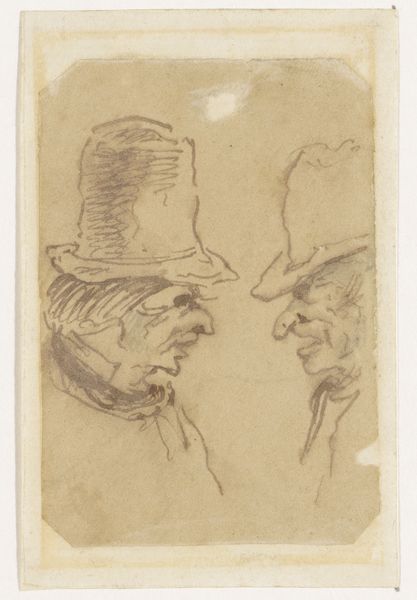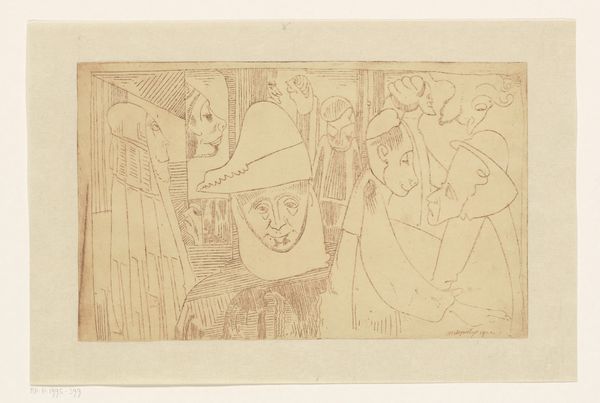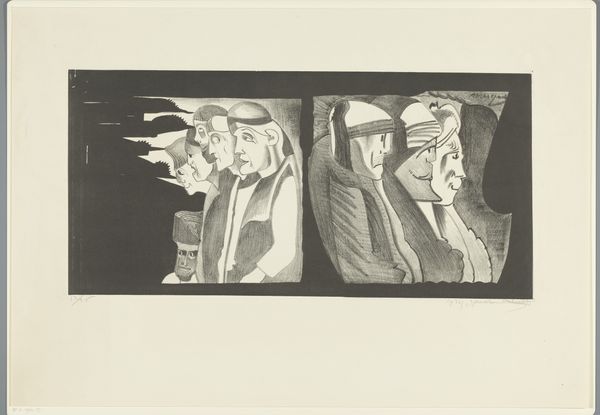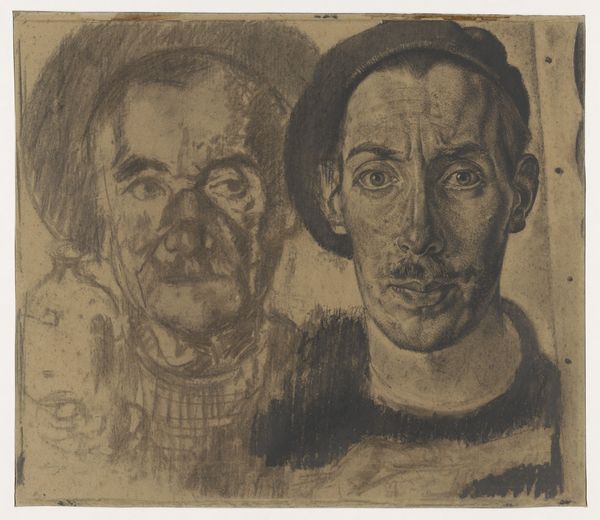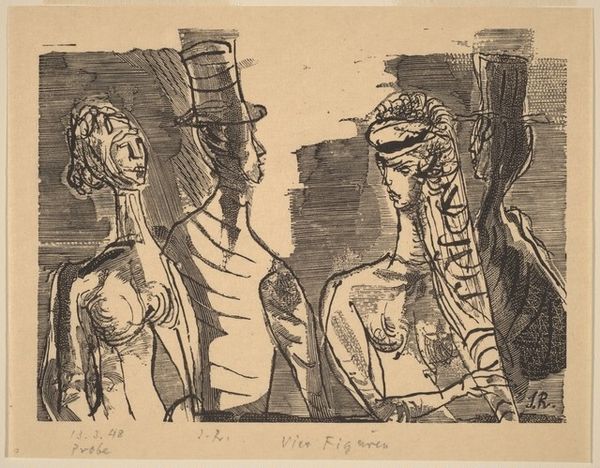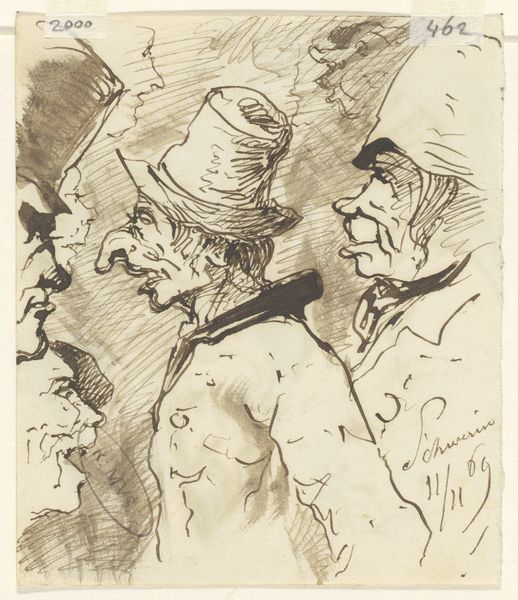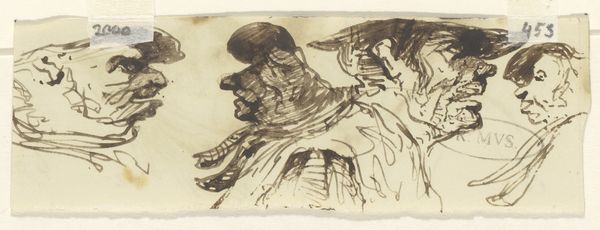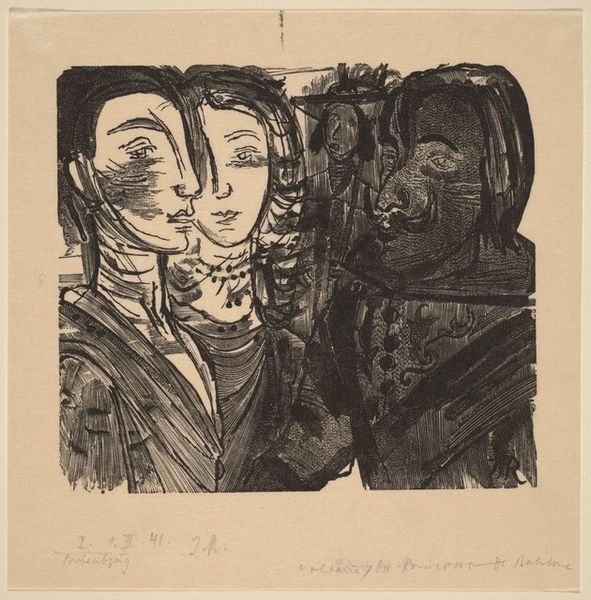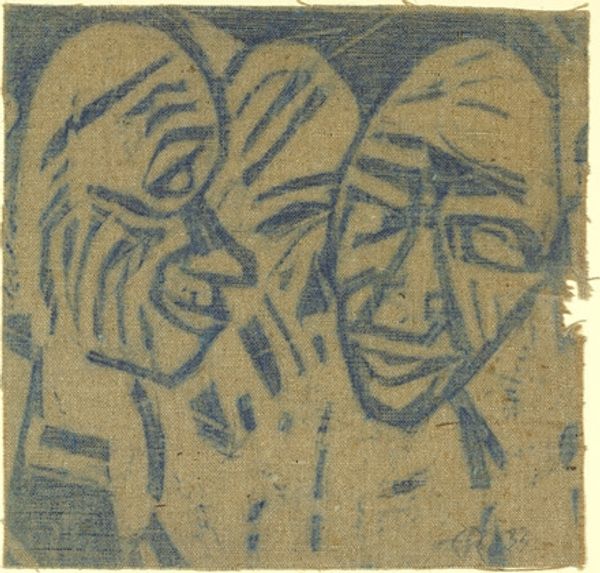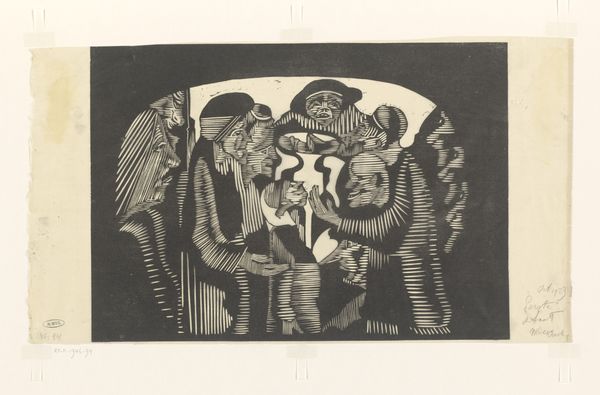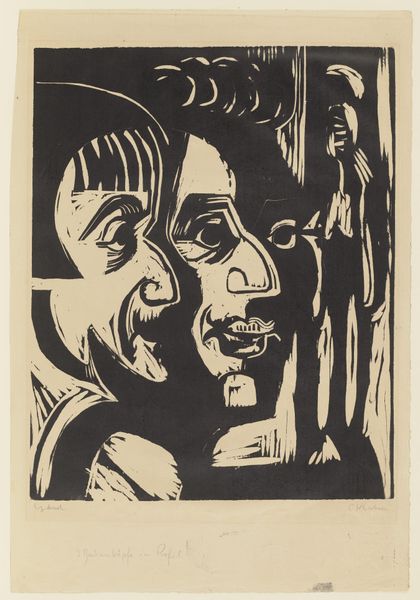
print, etching
#
portrait
#
toned paper
# print
#
etching
#
portrait reference
#
group-portraits
#
portrait drawing
#
realism
Dimensions: height 340 mm, width 438 mm, height 400 mm, width 553 mm
Copyright: Rijks Museum: Open Domain
Curator: Looking at “Veluwse boeren,” created by Jo Bezaan around 1925, what’s your initial read of the print? Editor: Stark. There's a severity in the faces, isn't there? The sharp contrasts and the density of the etching—it speaks to a kind of unrelenting realism, almost brutal. Curator: Bezaan created this work in a period marked by significant social and economic change for farmers. Consider the shifts in agricultural practices and land ownership; such portraits reflected and likely reinforced ideas about the perceived steadfastness of rural folk in the face of modernization. Editor: You see that in the almost sculptural treatment of their faces. The lines create volume and depth, especially around the eyes and mouths. And their caps – each seems carefully rendered, as though crucial to defining them. I think the materiality of the etching process enhances that feeling too; the medium perfectly embodies the idea of durable strength. Curator: The choice of rendering a group rather than individuals could suggest an effort to emphasize a collective identity—to picture an entire social class as facing economic precarity, or resilience in a changing society. Editor: Perhaps, but consider the balance he strikes in the composition itself. Each figure has their own space, with just enough proximity to imply a shared experience, a brotherhood. It's the play of light and shadow—the etching marks themselves—that really hold them together, giving a rhythm to the composition as a whole. Curator: Do you think, stylistically, Bezaan's positioning of the farmers adheres to the established portraiture traditions? Or does it push against expectations? It seems to romanticize a difficult rural labor existence by focusing primarily on its perceived virtuous honesty and straightforwardness. Editor: Oh, there's certainly a hint of idealization at play. The gaze is direct, confronting, but almost noble in its defiance of sentimental narrative traditions. This pushes the boundaries. By employing such exaggerated techniques—like highlighting with broad areas of pure shadow – it adds, in its way, monumentality. Curator: These nuances highlight how representations of rural communities can be tied up with both honoring and romanticizing their position. Thanks for pointing out these compositional qualities! Editor: Likewise, this piece encourages close looking, where even the simplest details and structural relations enrich historical context.
Comments
No comments
Be the first to comment and join the conversation on the ultimate creative platform.
